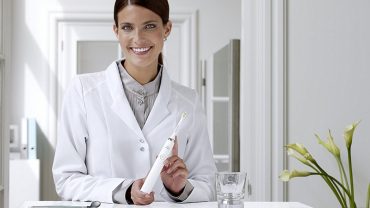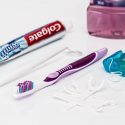How To Brush Autistic Child’s Teeth
For parents of autistic kids, basic hygiene routines like taking a bath or washing their hair can be a challenge to get through.
Getting them to brush their teeth can be downright impossible. They don’t want to brush on their own and they’ll fight you if you try to help them.
To find out what works, it’s important to understand why your child is averse to brushing their teeth.
Do they find the brushing action to be too stimulating? Do they find it tiring to stand in place for two minutes while brushing? Do they feel defensive about opening their mouth?
Once you find out what the issue is, it’s easier to find a solution.
Here are some general tips you can try to learn how to brush autistic child’s teeth.
1. Use a Softer Toothbrush
If you notice that your child is hypersensitive to any stimulation in or around their mouth, try using a toothbrush with extra-soft bristles or some other toothbrushes suitable for autistic children.
It could be that the bristles on the current toothbrush makes them uncomfortable.
Also consider switching to a silicone toothbrush.
The silicone bristles are much gentler compared to traditional nylon bristles thought they clean just as well.
2. Set a Predictable Routine and Use a Timer
Some autistic kids do really well when put on a predictable routine. If your child is like that, make sure they brush their teeth at the same time every day.
This way, they know when to expect it.
It’s also a good idea to use a timer to let the child know when the brushing will be over. This is helpful for autistic kids who are unable to maintain focus on a specific activity for long.
Set the timer to two minutes and make sure they can see it count down.
If you don’t have a digital clock, you can use your phone.
3. Sing a Song
Something else that works well for many autistic kids is singing to them, or together with them, as they brush.
This distracts them from the task and makes it feel quicker.
Since most rhymes are short, let them know that they will be done only after you repeat it a number of times.
To get started, you have to first do it yourself. Stand at the sink and brush as you sing the song several times.
Then give them a toothbrush and ask them to do it as you sing.
Note: This won’t work on autistic children who hate the sound of singing.
4. Change Location
Sometimes, changing the location can help.
Perhaps they find the bathroom or sink area uncomfortable. Change to a location where they feel comfortable like the couch or their bed.
The most important thing is that they brush their teeth, not where they do it. As for spitting, they can do it in a cup.
5. Change the Toothpaste
For kids who are very sensitive to taste, the problem could be the type of toothpaste you are using.
Most kids don’t like minty toothpaste. Not only can it be overpowering, it can also cause a burning sensation.
Look for a kid-friendly toothpaste with a pleasant flavour like strawberry or bubble gum.
Additional Tips
- Get a toothbrush with a soft and easy-to-grip handle. Also consider buying a 3-sided toothbrush. It cleans multiple teeth surfaces in just a single stroke, meaning they don’t have to spend a full 2 minutes brushing their teeth.
- Get a toothbrush with lights and music to encourage them to brush their teeth. However, this will only work for kids without sensory issues towards lights or music.
- Use verbal praise and rewards to encourage your child to keep brushing their teeth.
- Try using flavorless and non-foaming toothpaste if your child is highly sensitive. The most popular brand of flavour-free and non-foaming toothpaste is Oranurse.
- Do it together. Brushing your teeth at the same time as your child encourages them to get in on the habit. Make sure you show obvious enthusiasm when brushing.
- Keep them distracted. Some ideas include brushing their teeth when they are in the bathtub or when playing with toys.
- Make a visual guide showing them how to brush their teeth. Some autistic kids respond well to visual cues.
- Use warm water. Your child may be reacting to the cold water. Change to warm water and see if it helps.




